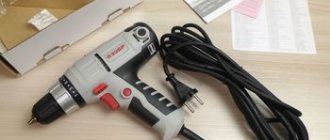The headache of every owner of a country house is the issue of uninterrupted power supply to the boiler and other equipment.
Unfortunately, the problem of constant power outages, at any time, is almost the norm for many.
First of all, this applies to private houses and cottages. If in summer you can somehow survive this, then in winter during the heating period, the disappearance of voltage can be critical for your heating system.
UPS or generator
This problem can be solved by installing an uninterruptible power supply. Simply called a UPS, uninterruptible power supply or inverter for a boiler.
Those who want to make a choice in favor of a generator, think about what will happen if the power goes out when you are not at home? How to switch the boiler to backup power in this case?
You will need models with an autostart system and other automation, but they cost completely different money.
In addition, often the lights are turned off not for long, but for a maximum of half an hour. You just take the generator out, fill it with gas, plug it in, start it, and all this in the bitter cold.
And in terms of the quality of the output voltage (frequency, sine wave), generators are noticeably inferior to inverters.
Therefore, the choice here is obvious for many.
Types of uninterruptible power supplies
Uninterruptible units differ in their operating principles:
- Continuous.
- Linear interactive.
- Reserve.
The more functional the device and the longer it can operate autonomously, the higher the cost.
Option 1. Reserve
Backup uninterruptible power supplies for a gas boiler operate only when there is a power surge or the lights are turned off. In fact, backup UPSs are considered intermediaries, transmitting current with the same input and output parameters.
They can be equipped with 5-10Ah batteries. The larger the battery, the longer the battery life. The maximum duration for backup UPSs is 30 minutes.
Reserve-type units cannot operate continuously and maintain the functionality of heating devices. Their task is to enable owners to turn off the heating manually.
Benefits of backup UPS:
- Low cost.
- No noise.
- High level of efficiency.
Flaws:
- Switching time up to 12 minutes.
- Same voltage at input and output.
- Insufficient capacity.
Option 2. Linear interactive
Devices of this type are equipped with voltage stabilizers that provide an output of 220 V. If the distortion is more than 5-10%, the system will connect to the battery.
More expensive models can analyze a sine wave. However, it is impossible to make adjustments when the device is powered from an outlet.
Advantages of line-interactive UPS:
- The device switches to offline mode in half a second; the device does not have time to turn off.
- High efficiency when operating from a power outlet.
- The block stabilizes the output voltage.
Disadvantages of uninterruptible power supplies for gas boilers:
- Difficult to manage.
- There is no way to change the sine wave.
- Capacity is limited to 5kVA.
- The current frequency cannot be adjusted.
Option 3. Continuous
The continuous type of uninterruptible power supply for gas boilers is considered the most functional. Once you connect the power supply, the boiler will operate only from it. Regardless of the size of the input voltage.
The reason for this is a two-step conversion:
- The DC input current is reduced to allow AC rectification to occur. The battery will begin to charge.
- When releasing electricity, the process occurs in the reverse order.
Benefits of continuous UPS:
- The device operates autonomously even when the parameters are stable.
- Protection of the heating boiler from sudden shutdowns.
- Availability of batteries.
Flaws:
- Loud operation and heat dissipation when the fan is on.
- Efficiency is 80-94%.
- High price.
UPS from a computer for a gas boiler
Just do not confuse this uninterruptible power supply with a UPS for a computer. The computer version uses built-in batteries.
They do not provide the full battery life that is required. Therefore, if you think “I’ll buy a more powerful UPS for my computer in the summer, and in the winter I’ll connect the boiler through it,” this is a misconception and a mistake.
Even if someone advises you to assemble a circuit for a computer UPS connected to external batteries, do not do it. Computer models have an approximated sinusoid, which will have a bad effect on the operation of the equipment. But more on this a little later.
Boiler equipment requires a power source with external batteries. At the same time, with the possibility of increasing power.
They will provide sufficient battery life.
What is the operating principle of a UPS? It converts DC voltage from batteries into AC voltage. In the event of a power outage, all consumers, without time delays, instantly switch to working from the battery.
And when voltage is supplied back from the network, the inverter automatically returns to normal power mode. This recharges the discharged batteries.
Pure sine and its effect on the boiler
First of all, when choosing a UPS for a boiler, pay attention to the shape of the output voltage.
There are 2 types of output voltage:
- pure sine
- quasi-sine (square wave)
When choosing, always focus on a model with pure sine. Why is it important?
Boilers and its equipment do not like both voltage drops and changes in the frequency of the output signal. If you buy a UPS with a quasi-sine wave, the boiler may detect this voltage as an error and will go into trouble.
Electronics, of course, are not afraid of an irregular sine wave. But the pumps of heating equipment, such as RS or UPS, begin to hum.
The motor in the pumps is asynchronous and this pseudo-sine produces a lot of harmonics, which significantly reduce efficiency and cause heating and humming.
In addition, the boiler itself has its own built-in circulation pump, and sometimes more than one, hence such stringent requirements.
Always pay attention to the UPS's ability to withstand high inrush currents (two to three times). In addition to the boiler itself, there is also other equipment that needs to be powered, for example a submersible pump.
How to professionally choose a UPS for a boiler
Selecting a UPS modification for gas heating boilers is very labor-intensive due to the variety of important technological parameters; in addition, the Russian market is oversaturated with various modifications of uninterruptible power supplies, both Western and domestic.
For the operation of heating equipment with a gas heating source, the most important parameters for choosing a UPS are:
- The type of output voltage bending is approximated/traditional sinusoid. The first is less desirable because it is not suitable for the vast majority of electronic devices and causes them to wear out quickly.
- Maximum power output. The electric motors of the centrifugal electric pump and blower electric fan have significant starting currents, and therefore the maximum productivity of the UPS must be 2 times greater than the total electricity consumption of the boiler and its auxiliary devices.
- The speed at which power is transferred to a backup source.
- Electrical capacity, on which the duration of operation of the heat supply system will depend. To increase its size, auxiliary external batteries can be integrated into the UPS circuit.
- Service life, which is determined by the operating mode of the UPS system and the internal structure of the batteries.
- The range of permissible input parameters of the electrical network, which allows the UPS to produce permitted current parameters without switching to the battery.
- The presence of a “through” zero.
The best UPS + battery kit
Uninterruptible power supplies for gas boilers are produced only with lead-acid batteries (LAB), which are significantly heavier and have larger dimensions. than lithium ones. The preference for their installation is explained by their low cost. In addition, the advantage is the possibility of hermetically sealed manufacturing, which significantly increases operational safety. The latter also contributes to the fact that UAVs do not require service repairs.
Many UPS systems take into account the possibility of switching on external rechargeable batteries. In circuits with parallel connection of a number of batteries, it is important that they have equal technical parameters. This will allow the batteries to be discharged/charged in an orderly manner and increase their service life.
There are 2 types of UPS batteries available in the retail chain:
- Gel batteries, multi-gel (GEL);
- batteries made of fiberglass mat (AMG).
Silicon additives have been introduced into the GEL electrolyte, for this reason it has increased density. Therefore, the filling cannot spill out when turning the device over. Oxygen and hydrogen, which are released during the operation of the battery, are absorbed by the gel and, gradually interacting with each other, release water. This operating principle guarantees the absolute safety of this type of battery.
Calculation of power and battery life
What power should I choose for a UPS for a boiler room? The calculation here is not complicated.
Just add up the power of all electrical appliances that will be connected through it and multiply by two. If there is a deep-well pump, then by three - taking into account its starting currents.
The data can be taken from the passport or operating instructions, or viewed directly on the product bodies.
For example, for a boiler room where 3 pumps of 90 W each are installed and the boiler itself is 135 W, an inverter from 0.8 to 1.0 kW is suitable. At lower power, field switches (transistors) will overheat.
If the sum of all electrical appliances exceeds the power of the model you have chosen, suddenly you want to power any household appliances, light bulbs, then initially take them into account, and not just boiler equipment.
Here the power can vary from 1 to 5 kW.
How long will the selected UPS operate in autonomous mode? It all depends on the batteries. Here is a table with characteristics of battery capacity and connected load:
It clearly shows in hours and minutes how long your uninterruptible power supply will last for independent operation from the network.
How to choose a UPS for a gas boiler and what to look for?
When choosing an uninterruptible power supply, the main parameters that you should pay attention to are:
- Battery type . For gas boilers, there are special batteries made using AGM GEL and AGM technologies. It is important to know that ordinary car batteries are not suitable, since due to the nature of their structure there is a danger of electrolyte evaporation, and they are not able to withstand regular load.
- Battery life . If there are constant power outages, it is recommended to purchase more energy-intensive batteries.
- Power . When calculating power, you must take into account the number and power of all devices that will be powered by the UPS. It is important to know that starting currents are often 3 times higher than rated currents. Therefore, to find out the required power of the uninterruptible power supply, you should multiply the power consumption of the circular pump, first by 3, and then by 1.2-1.3.
It is recommended to install the UPS in a dry, well-ventilated area . It is strictly forbidden to cover it, as this may cause damage due to overheating.
Installation location
It is better to place the UPS near existing outlets. If it is not large, then it is not at all necessary to hang it on the wall, just place it on the nearest shelf. The main thing is not to block the ventilation holes.
At the same time, do not forget to comply with the rules of the PUE. The minimum distances from gas pipes to sockets, including the UPS, must be at least 0.5 m.
Regarding the placement of batteries. Fashionable AGM models are afraid of elevated temperatures of more than 30 degrees. And near the boiler the temperature will clearly not be room temperature.
Therefore, place the battery as far as possible from heating pipes and hot boiler equipment.
Car batteries or AGM, gel
Many consumers often use car batteries for uninterruptible power supply, which is absolutely not allowed. These batteries are fire and explosive.
They are designed for starting currents, and accordingly do not provide the autonomous operation that is required of them. Therefore, here you need to use specialized batteries using AGM or GEL-gel technology.
AGMs have a service life of 6 to 10 years, and gel ones from 10 to 15 years.
Also, gel ones are not afraid of deep discharge.
In addition, both models are fire and explosion-proof for any premises and do not emit any gases. Of course, they cost more, but if earlier the prices differed significantly, today you can find models with a difference of only a couple of thousand.
Automotive types are not designed for a large number of charge-discharge cycles, but specialized ones with a regular discharge of 30% can be painlessly recharged up to 700 times!
That is, a regular one from a car will last you for a maximum of six months or one heating season, and AGM or gel ones should, in theory, last at least 10 years.
Moreover, high-quality UPSs initially have built-in deep discharge protection. Accordingly, this will further increase the battery life and ensure the longevity of the entire system.
Just be careful and check the battery release date in advance, even in the store. It may not be clearly indicated by numbers, and the sellers, modestly keeping silent about this point, will sell you an old, stale model.
Here, for example, is a table decoding the release date of Ventura brand batteries. Code GF11 PJB6VVK3EA and its decoding based on the first characters. Other brands may vary.
It turns out the release date: 2017-June-11.
Interactive models
This type of power supply is popular among users due to its low price and reliability. If you need to choose an interactive UPS, take a closer look at these models.
Cyberpower CP1500epfclcd
This device is distinguished by the purity of the sinusoidal signal. The CP1500epfclcd is designed in a tower style, with a user-friendly LCD screen with buttons on the front. The controls are intuitive and do not require special skills.
A distinctive feature of this model is the input voltage level from 170 to 270 V. The device switches in 4 ms, has 6 connectors for sockets, a USB port and RS-232. Auto fuse and bypass included.
If the UPS is loaded at 50%, it will extend the operation of the heating boiler for another quarter of an hour. When fully loaded, the time will be reduced to three minutes.
Users appreciated the performance of the device. It features quiet operation, good power of 900W and ease of use.
The device has several significant disadvantages:
- No hot swapping of batteries.
- High price tag.
- Sticky buttons.
Energy guarantor 500
This model is distinguished by its compactness and only one connector. It doesn't have high power. Total 300W. This is not enough to power the thyristor stabilizer.
The relay installed in the device is quite crude. The output voltage can jump from 200 to 240V. Battery and USB are not included.
Buyers choose Guarantor 500 for:
- Purity of the sinusoidal signal.
- Quiet work.
- Ease of use.
- Availability of auto fuse and bypass.
- Possibility of installation in rooms with temperatures down to -5 degrees.
Powercom infinity inf 1100
Powercom is a 3 in 1 device: inventor, stabilizer and uninterruptible power supply. It doesn't have built-in batteries, but it does have surge protection and a USB port.
According to users, this is a reliable device with a power of 770W, capable of switching in 4ms.
Flaws:
- No built-in batteries.
- Lack of protection of telephone and local networks.
- Inconvenient screen.
- No bypass.
Cyberpower utc650e
Compact size and low price are the main advantages of this uninterruptible power supply.
Its power does not exceed 360 W, there is no USB and display, but a fuse is installed. The device has a cold start option and is equipped with two connectors for Euro sockets. This is an economical model with a minimum of functions that can extend the operation of the boiler up to 16 minutes at loads of 90 W.
Types of UPS
Always strive to buy those inverters that initially have a voltage stabilizer built into them.
According to this parameter, UPS can be divided into 3 types:
- off line - whatever voltage is supplied to them, this is what comes out
An alternating voltage of 200V was supplied, and the same alternating voltage of 200V was received at the output. If the network parameters deviate beyond the minimum or maximum ranges, it will simply turn on the inverter and begin to take energy from the battery.
Some people wonder why their batteries drain so quickly. Although there seemed to be no outages. Just check the input voltage and everything will become clear.
- on-line - in them the alternating voltage is first converted into direct voltage, corrected, and then alternating voltage is output again
That is, all bad network parameters (sinusoid, voltage drops, frequency) are leveled and smoothed to nominal values.
- linear-interactive - they do not convert the frequency, but only have a built-in stabilizer
The best and most advanced models today are online.
They must be installed if you have temporary or long-term power supply from a generator.
There, problems are often observed with frequencies other than 50Hz.
Do you need a stabilizer if you have a UPS?
The power supply to country houses is characterized not only by frequent interruptions, but also by low quality input voltage. However, the UPS should not be considered a panacea for these ills.
Not all models can “pull” too low a voltage (less than 170-180V).
With such a drawdown, the device will go into error, turn off and beep. Accordingly, the boiler will turn off along with it, or it will immediately switch to the battery.
At the same time, the UPS itself may indicate that it is designed to operate at a voltage of 180V. What's the matter, were they deceived in the store?
The fact is that for the initial start-up such instances require a minimum of 190V, and only then, in the event of further drawdown, they can draw both 180V and 170V, and maybe lower.
Therefore, if you really have serious and constant problems with input U<200V, you will still have to install a normal inverter stabilizer at the input.
Otherwise, the boiler will be constantly powered only by batteries. And this will not increase their service life.
The inverter stabilizer calmly levels the parameters to normal, starting with drawdowns up to 90V.











